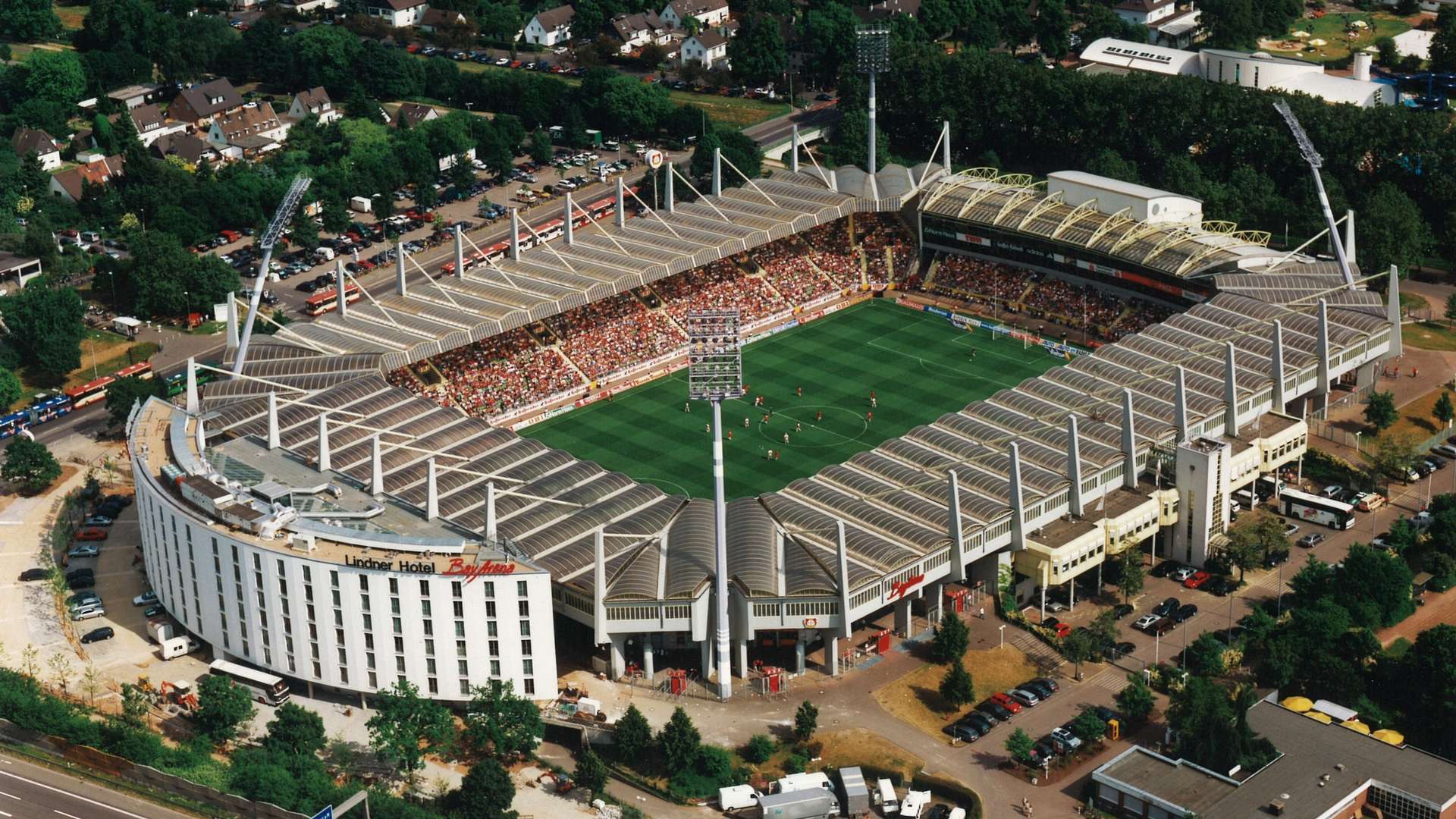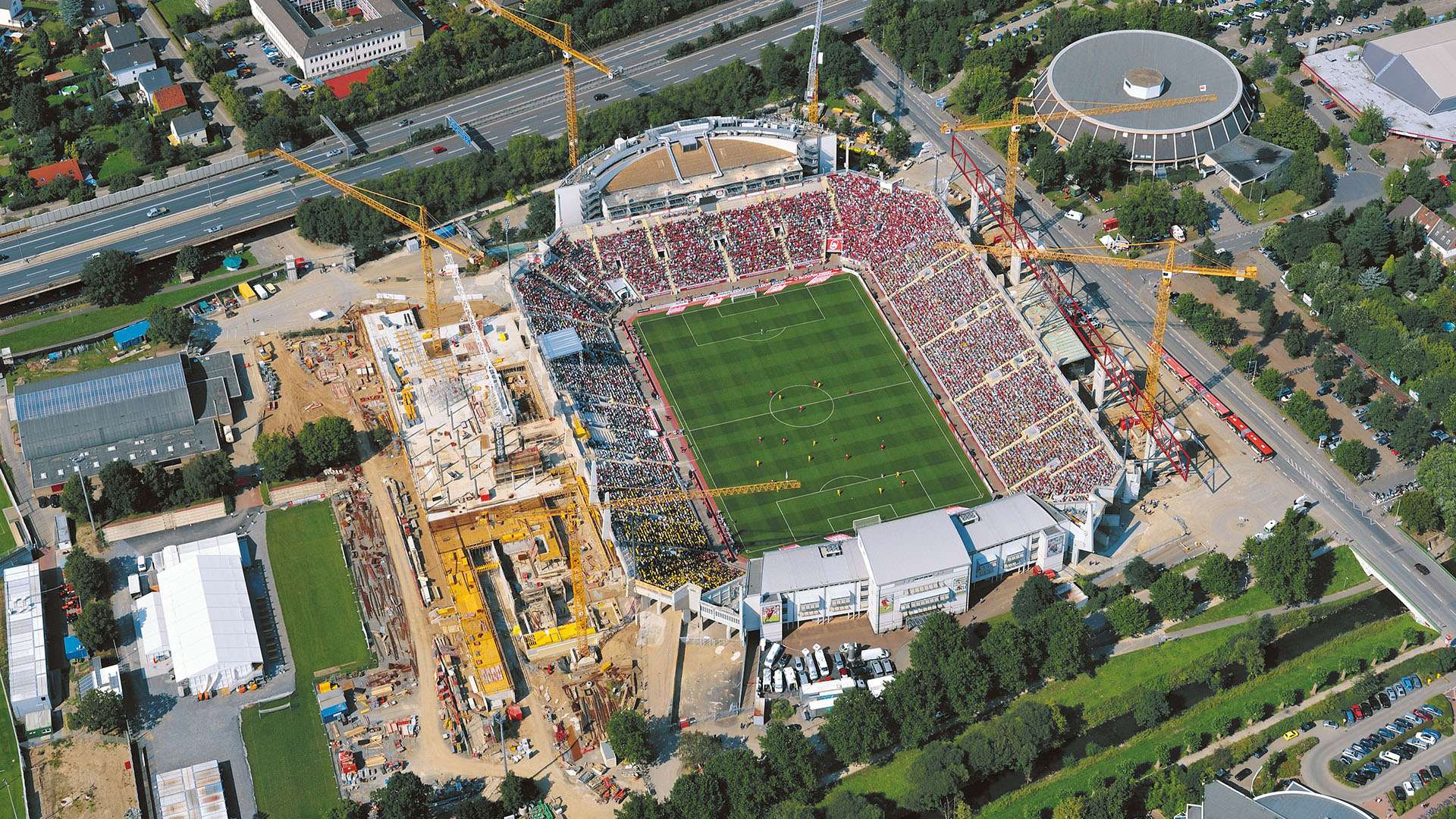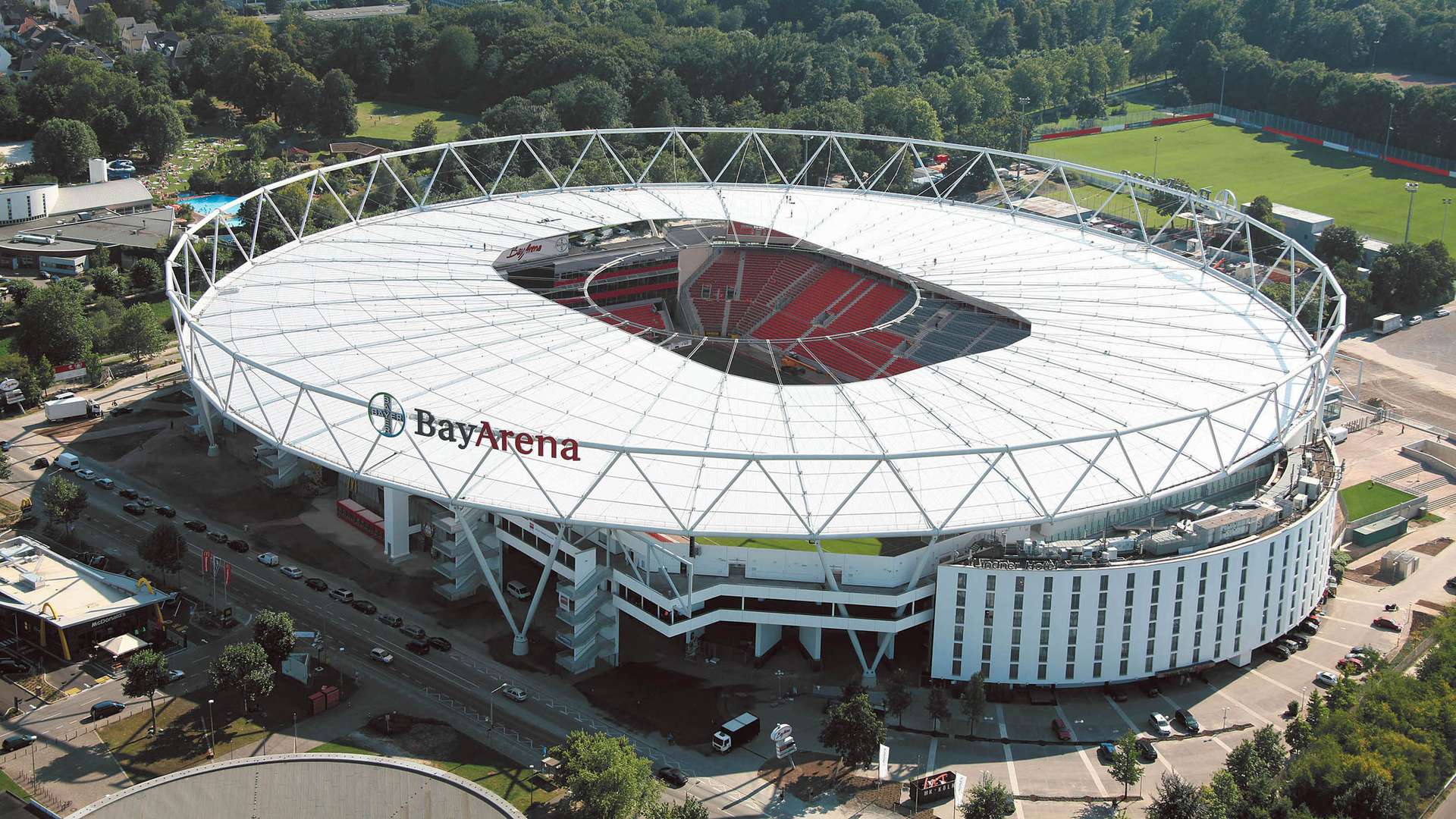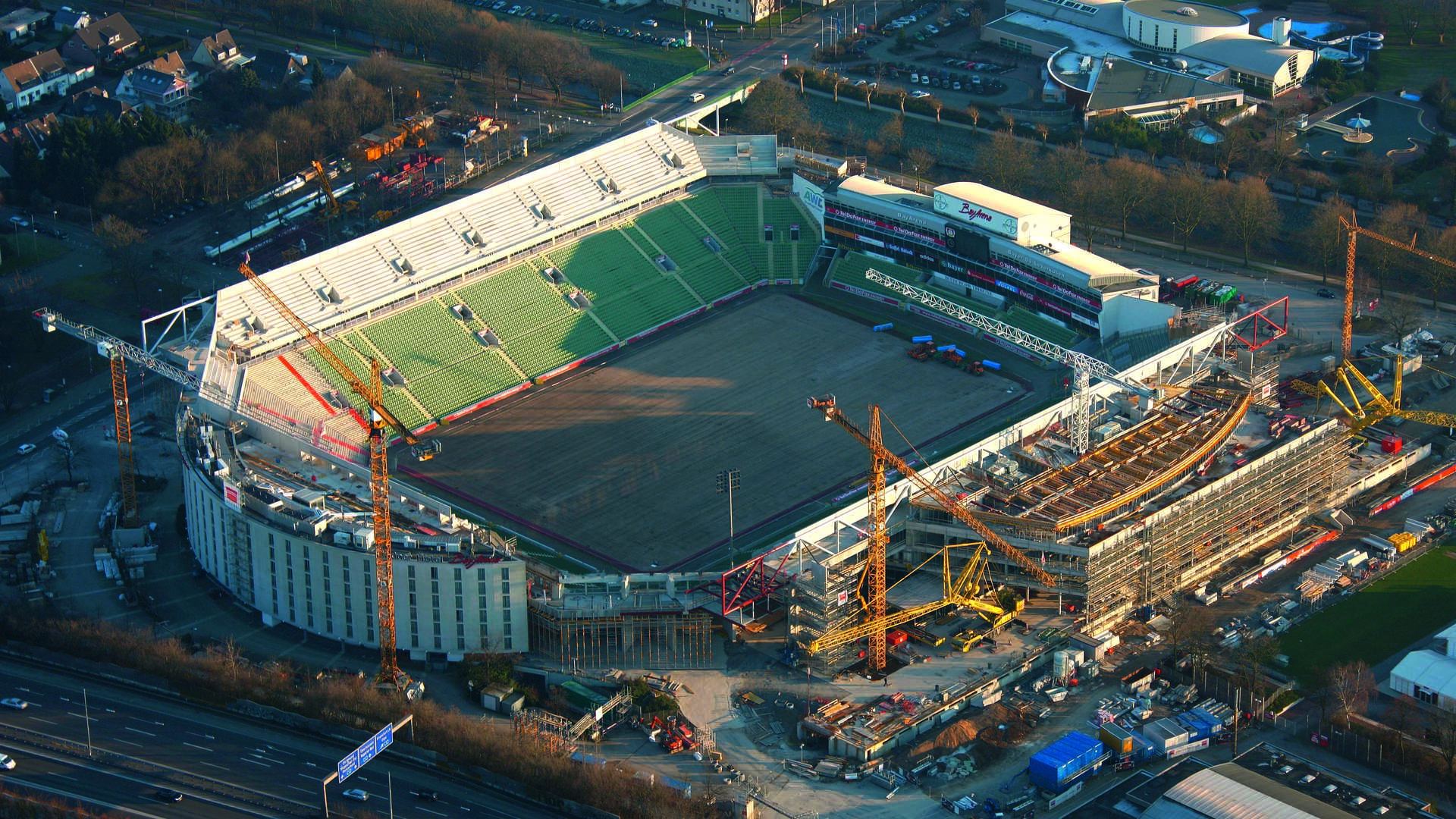Stadium history
The story of Leverkusen´s stadium
It all begins in 1907. It was first called the ‘Pitch on the Dhünn’ or ‘Dhünn pitch’, later ‘Stadium by the city park’ and ‘Ulrich Haberland Stadium’ and today the ‘BayArena’. Discover the history of the creation of one of Europe’s most modern stadiums.
1907 – 1914
The football section of the gymnastics and sports club of the paint factories formerly known as Friedrich Bayer & Co. in Leverkusen played at different venues in the early years:
- ...behind the ‘Wiesdorfer Hof’ On as yet unbuilt works land in today's F Block where the titanium dioxide factory of the Kronos Titan company is to this day. (Picture 1)
- ...opposite the ‘Wiesdorfer Hof’ on the other side of the then named Provinzialstraße on the site of the former brickworks. Since 1920 this place has been known as ‘DT Platz’ and it was primarily used for gymnastics by TuS 04. From around 1958 it was the site of the works transport garage. (Picture 2)
- …on an unbuilt area of grass south of the civil servant estate on Böttingerstraße. (Picture 3)
- ...in Wiesdorf at the back end of the earlier ‘Welfare Park' (today Recreational house Park) behind the domestic science College with access from Carl-Leverkus-Straße.
- ...on the grass of today's Carl-Duisberg-Park (up to Carl Duisberg’s death it was Kaiser-Wilhelm-Park). However, that was not met with enthusiasm by the chairman of the board and matches were soon stopped again.


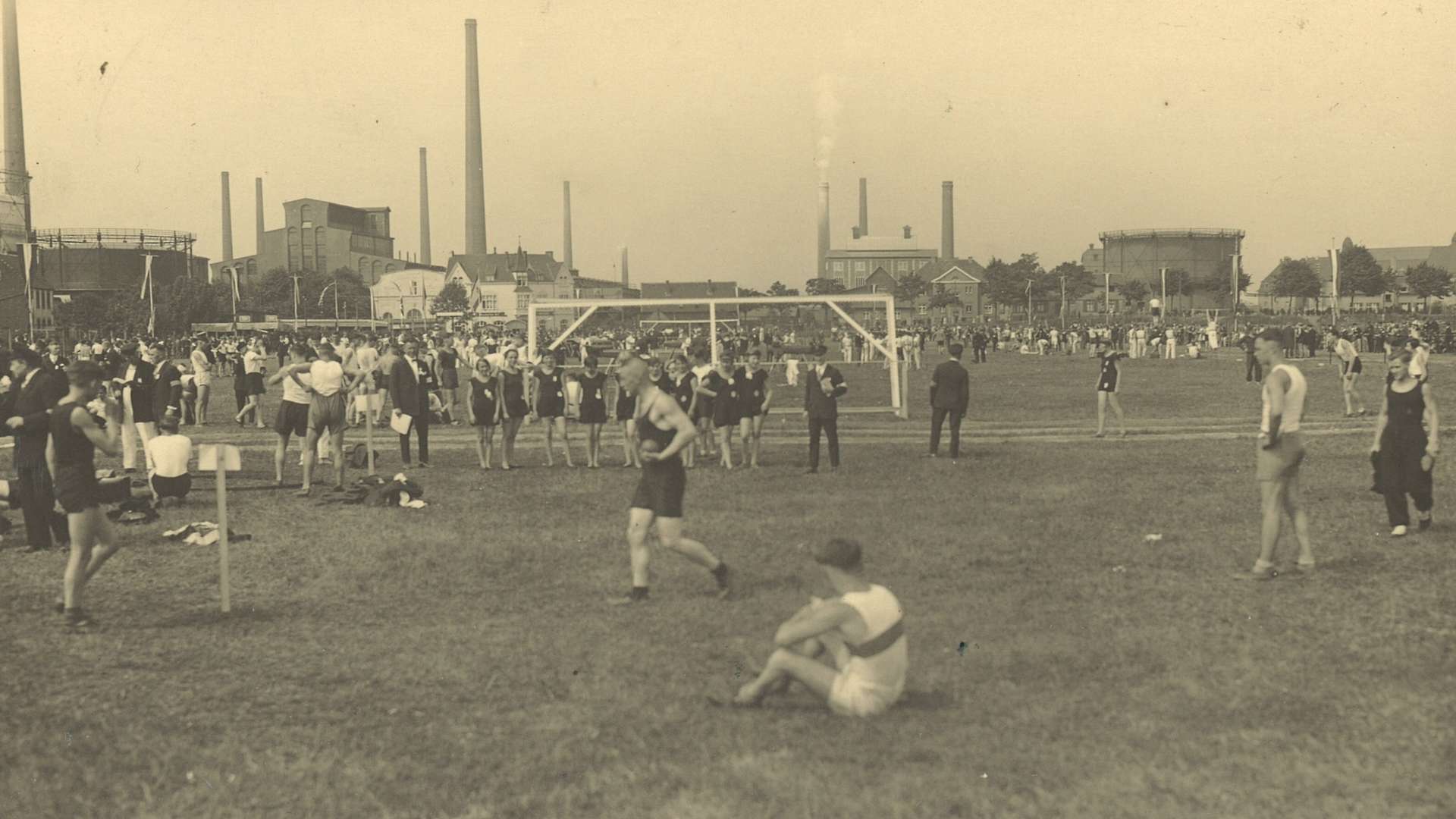

1914 – 1932
Platz an der Dhünn also known as Dhünn Platz
- The pitch is somewhat away to the west from Colony II extended between 1910 and 1914 with its back to the Dhünn, in today's Neuland Park. The area the pitch on the banks of the Dhünn could only be created after the small river was canalised up to its confluence with the Wupper in 1910. With the construction of the complex of buildings north of the then North Ring (today Albert Einstein Straße) as the final extension of the colony, Wiesdorf moved closer to the sports ground in 1919 and for18 years it was the home to many sports fixtures above all for football and field handball. In spite of the new home, it was necessary to again and again move to other Wiesdorf sports grounds as the pitch on the Dhünn still had one big drawback: Floodwater! Given the lack of flood protection on the Rhine there were often floods – postponed matches or changes of venue were unfortunately a common occurrence. (Pictures 4 & 5)
- Contingency pitch 1 sportsground on the former brickworks north of Manforter Straße, back then home to BV Wiesdorf, a stone’s throw from the DT-Platz of TuS 04. Today it is the site of the building of the Deutsche Rentenversicherung insurance company and the employment office.
- Contingency pitch 2 the Manforter Stadium from 12 June 1927. (Picture 6)
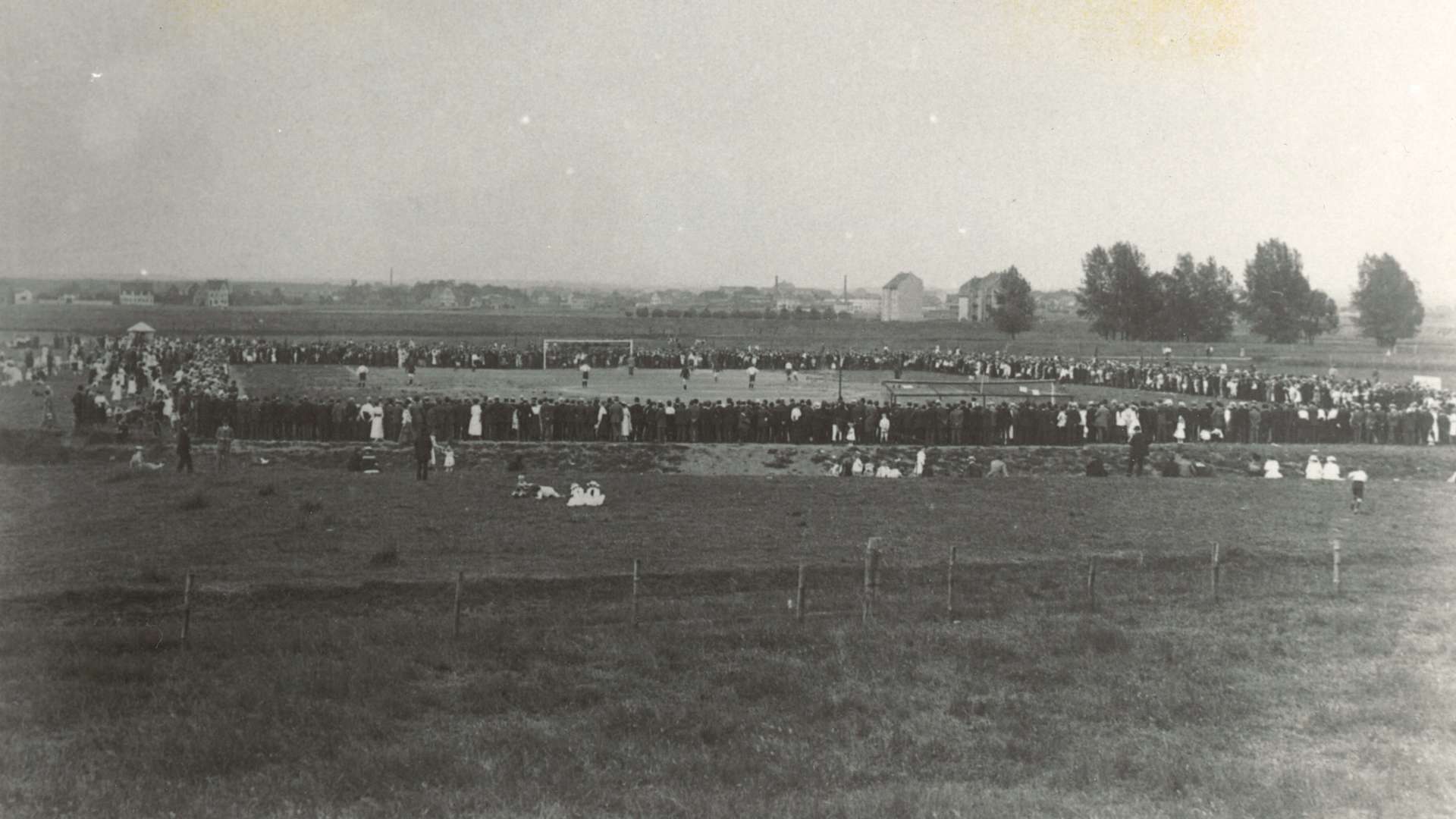


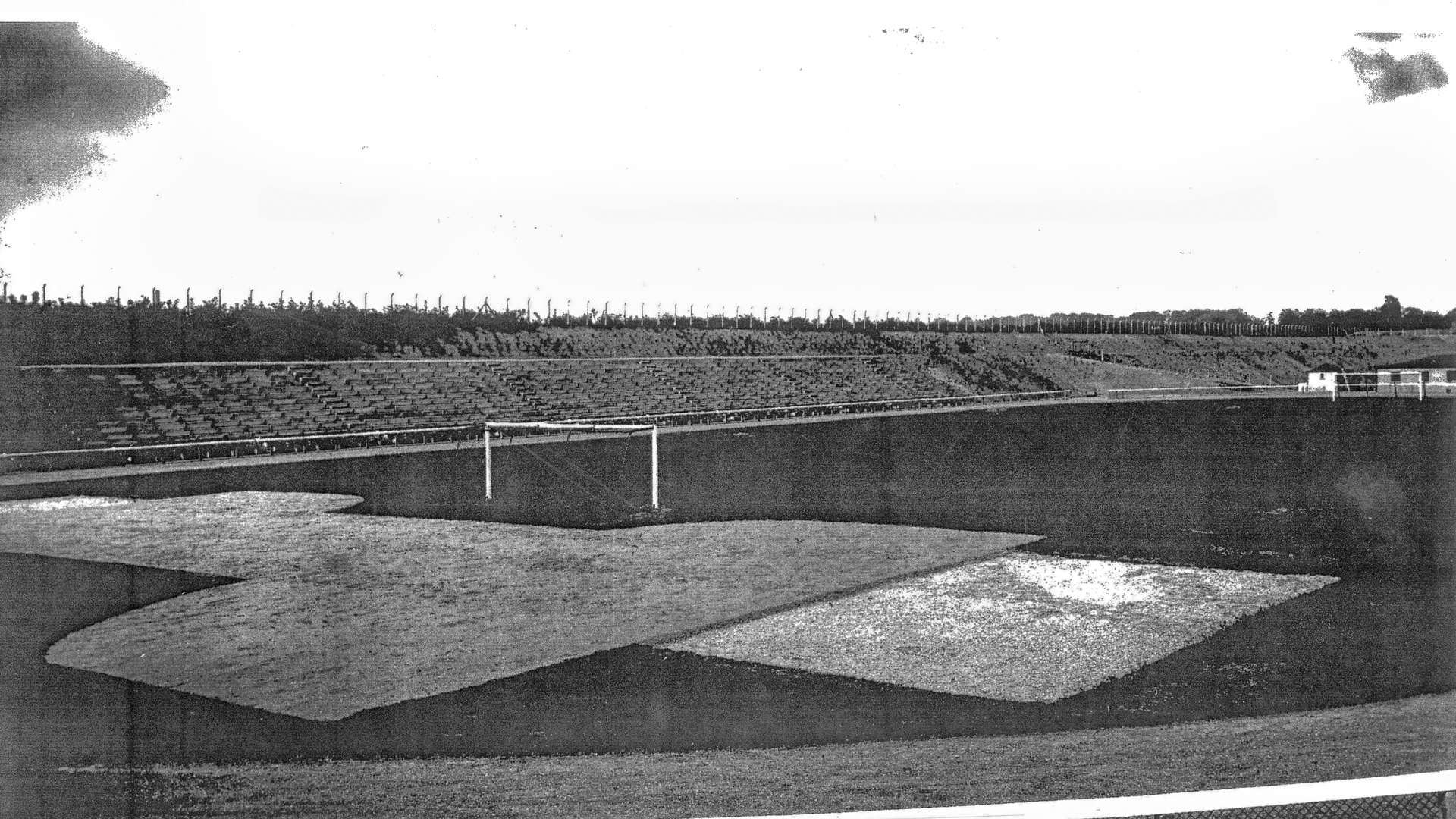
1932 – 1959
Stadium Am Stadtpark
- In the spring of 1932, unemployed club members started to dig up ground, fertilise and plant new grass on a three hectare piece of land south of the then Stadt and are doing in man fought. The land made available by the paint factories – at that time called .IG. Farbenindustrie AG – was near works colony III where the Lise-Meitner Grammar School is today (corner Am Stadtpark/Walter-Nernst-Straße). They then enclosed it themselves and the new sports venue was ready consisting of two pitches with the one closer to Walter-Nernst-Straße being the main pitch. (Picture 7)
- There was a pitch dedication on 4 September 1932 and up to 1958 the Stadion Am Stadtpark was the home venue for our club, also known locally as ‘Bayer-Platz’
- 1935: Construction of first dressing rooms with meeting room. (Picture 8)
- 1937: Construction of another three dressing rooms.
- 1939: Construction of public toilets for women and men.
- 1941: Construction of roof out of wood – an oddity: the terraces are under a roof, the seats in the open air. (Pictures 9 & 10)
- 1950: Construction of a new clubhouse with accommodation for groundsmen, meeting room and two dressing rooms. The meeting room is turned into a tap room during matches. (Picture 11)
Bayer 04 Leverkusen begin moving to the Ulrich Haberland Stadium from the summer of 1958. However, the pitch is so badly damaged in a friendly against MSV Duisburg in November 1958 that the Bayer team have to return to the old Stadtpark ground until the end of the season and the home ground on Bismarckstraße could only used from the 1959/60 season up to today. (Picture 12)


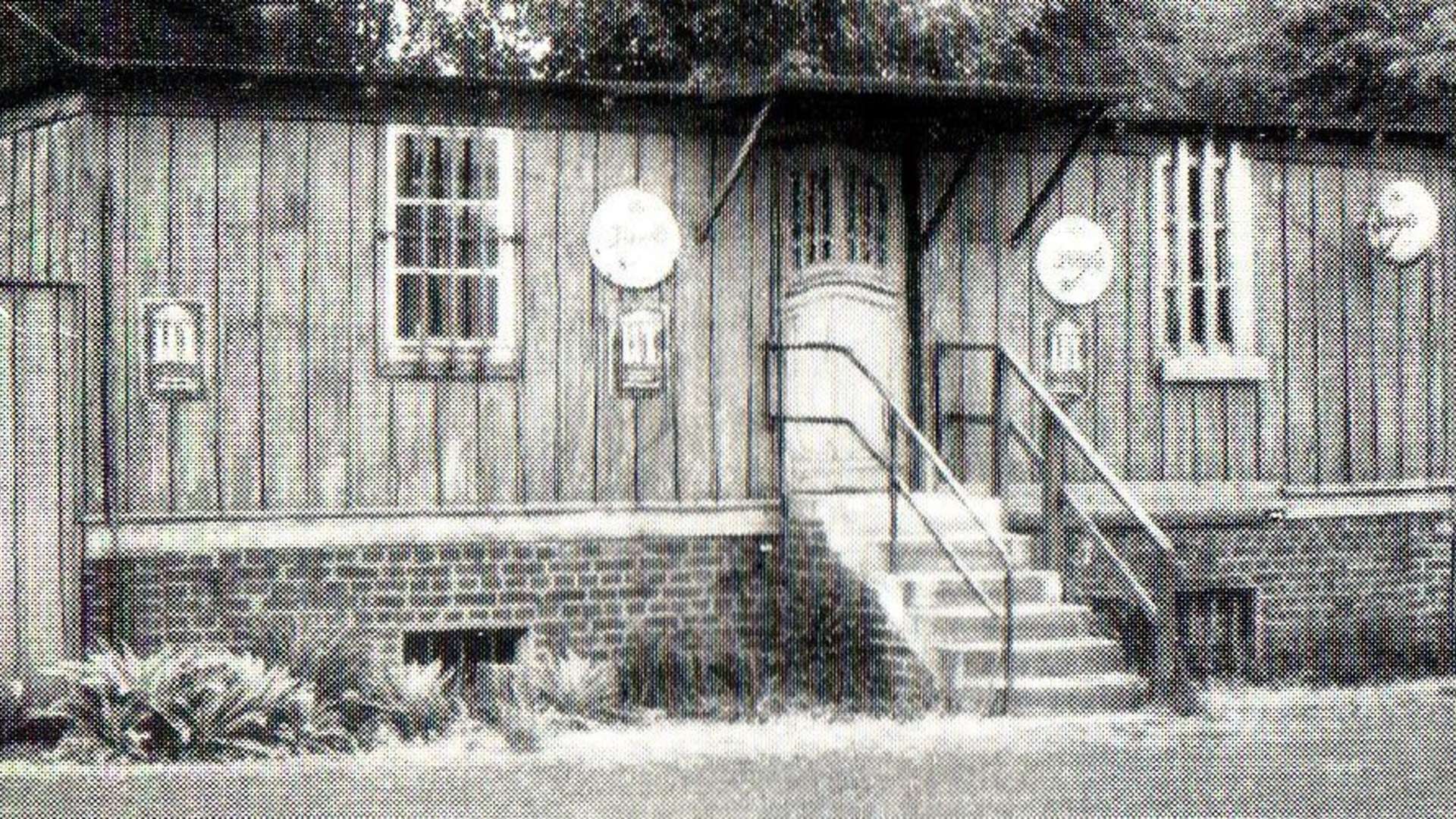
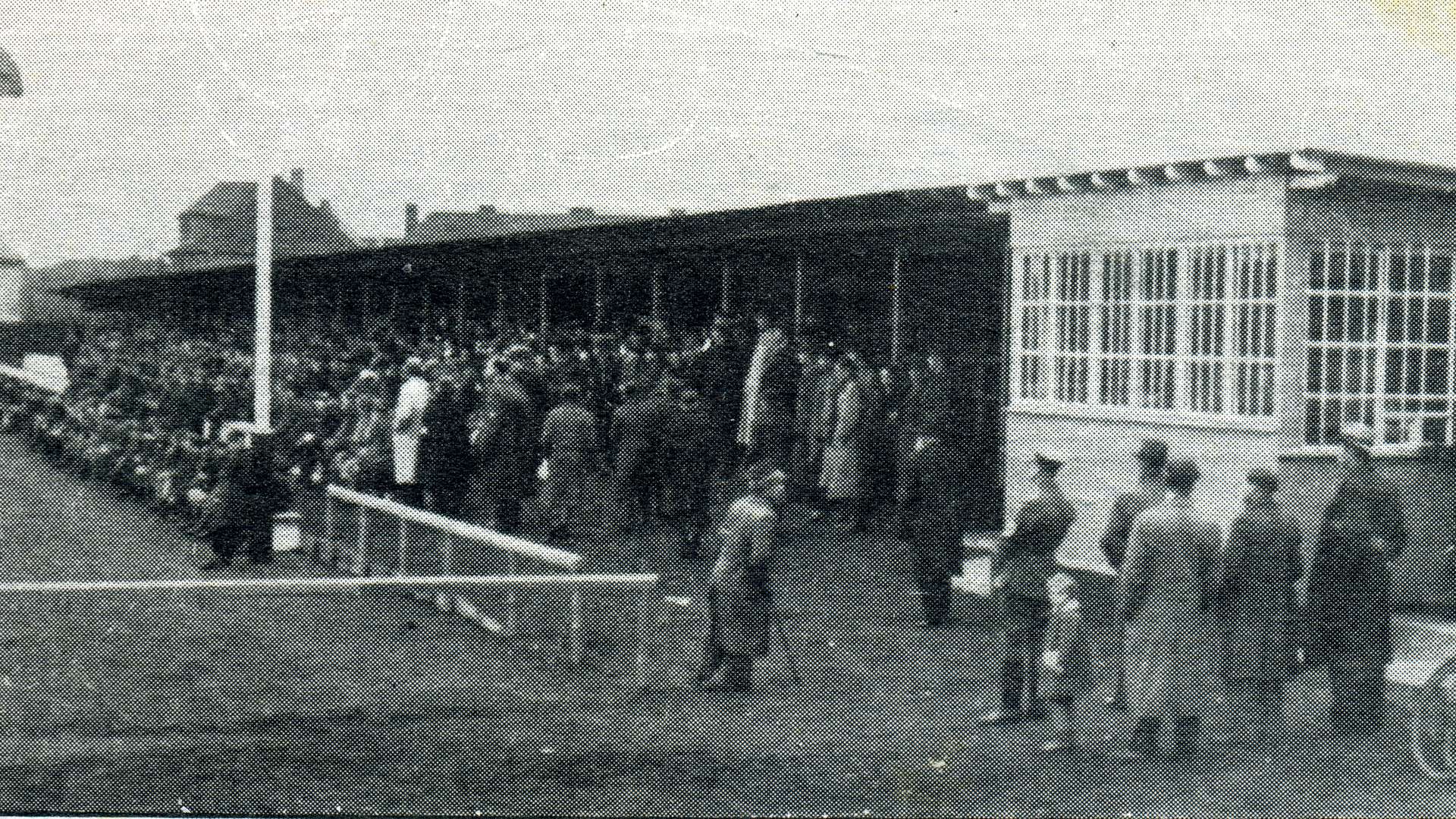

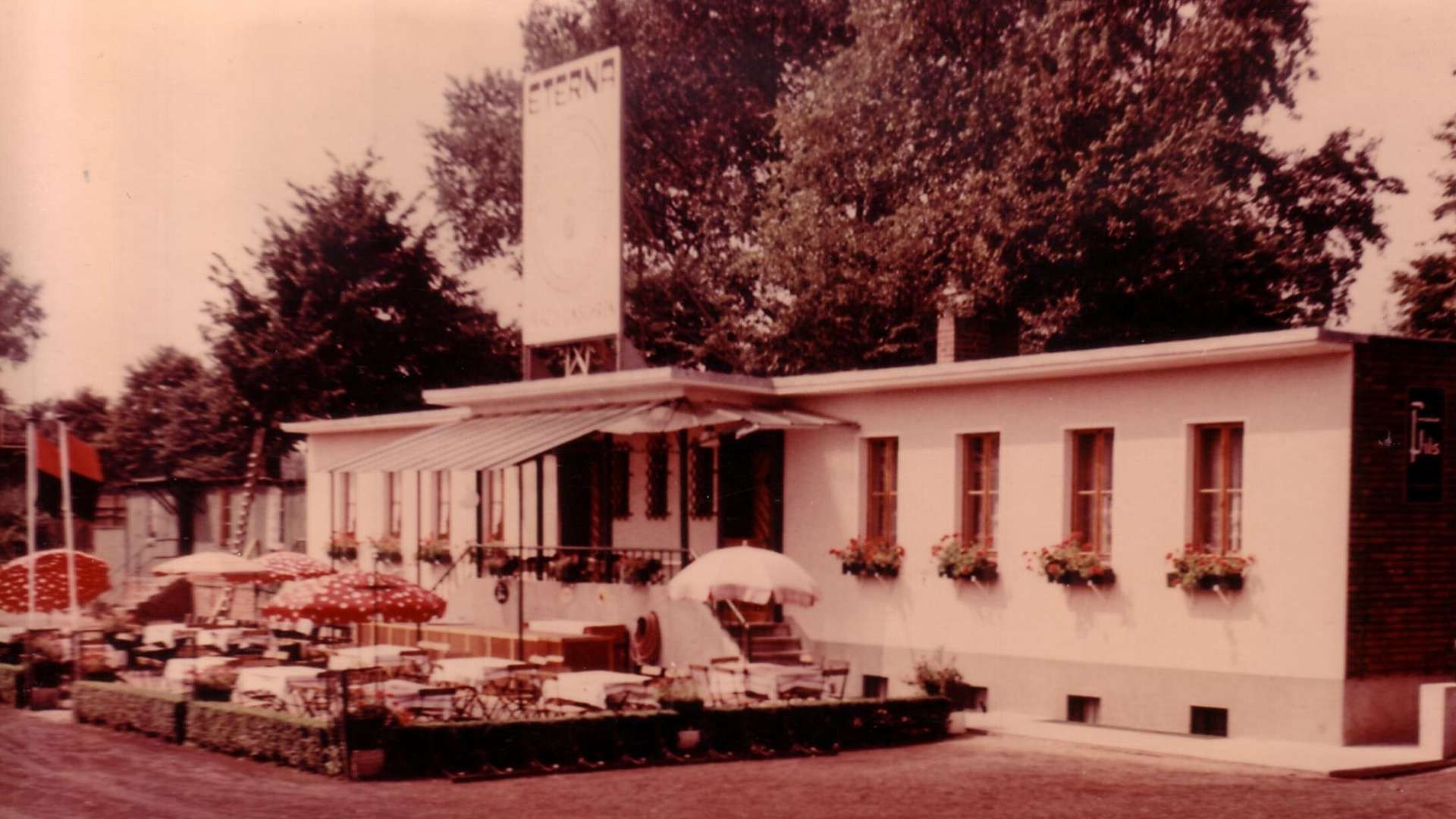
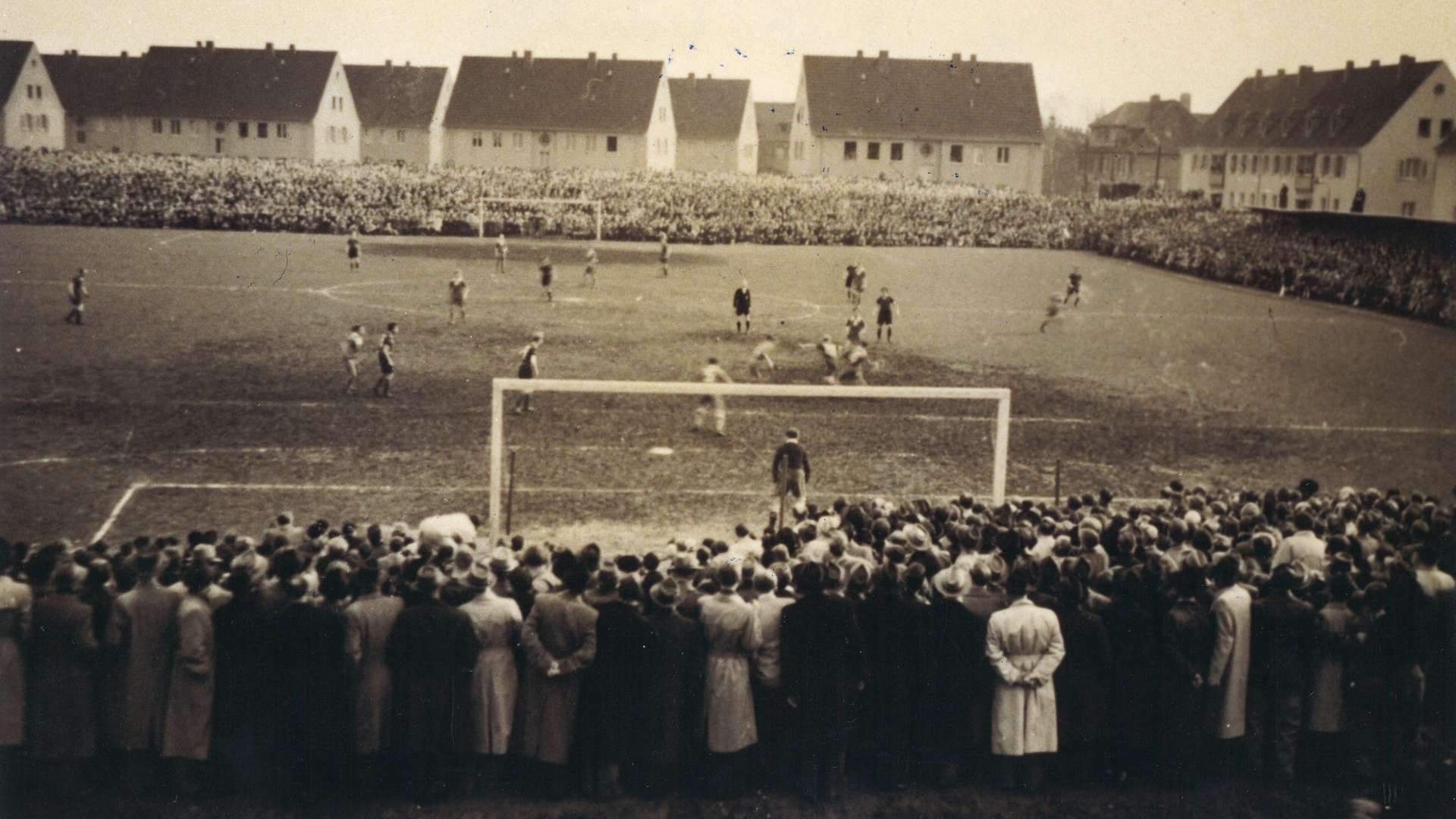
1958 – 1999
Ulrich Haberland Stadium
- April 1956: Groundbreaking ceremony the new stadium on Bismarckstraße.
- August 1958: Inaugural match against Fortuna Düsseldorf at the Ulrich Haberland Stadium, named after the big sports promoter and general director of Bayer AG. (Picture 13)
- November 1958: Friendly against MSV Duisburg. The pitch is so torn up that it has to be relayed. Moved back to the stadium Stadt part until the end of the 1958/59 season.
- August 1963: The first floodlights are installed on the 100 year anniversary of Bayer AG. (Picture 14)
- Summer 1979: Construction of wooden stand in the East. (Picture 15)
- October 1986: New East Stand with Blocks A, B and C is opened. (Picture 16)
- July 1988: Opening of new main stand including new offices and VIP rooms in the West.
- February 1990: New North Stand opens. (Picture 17)
- July 1997: Opening of new South Stand including new offices, VIP restaurant and executive boxes. (Picture 18)
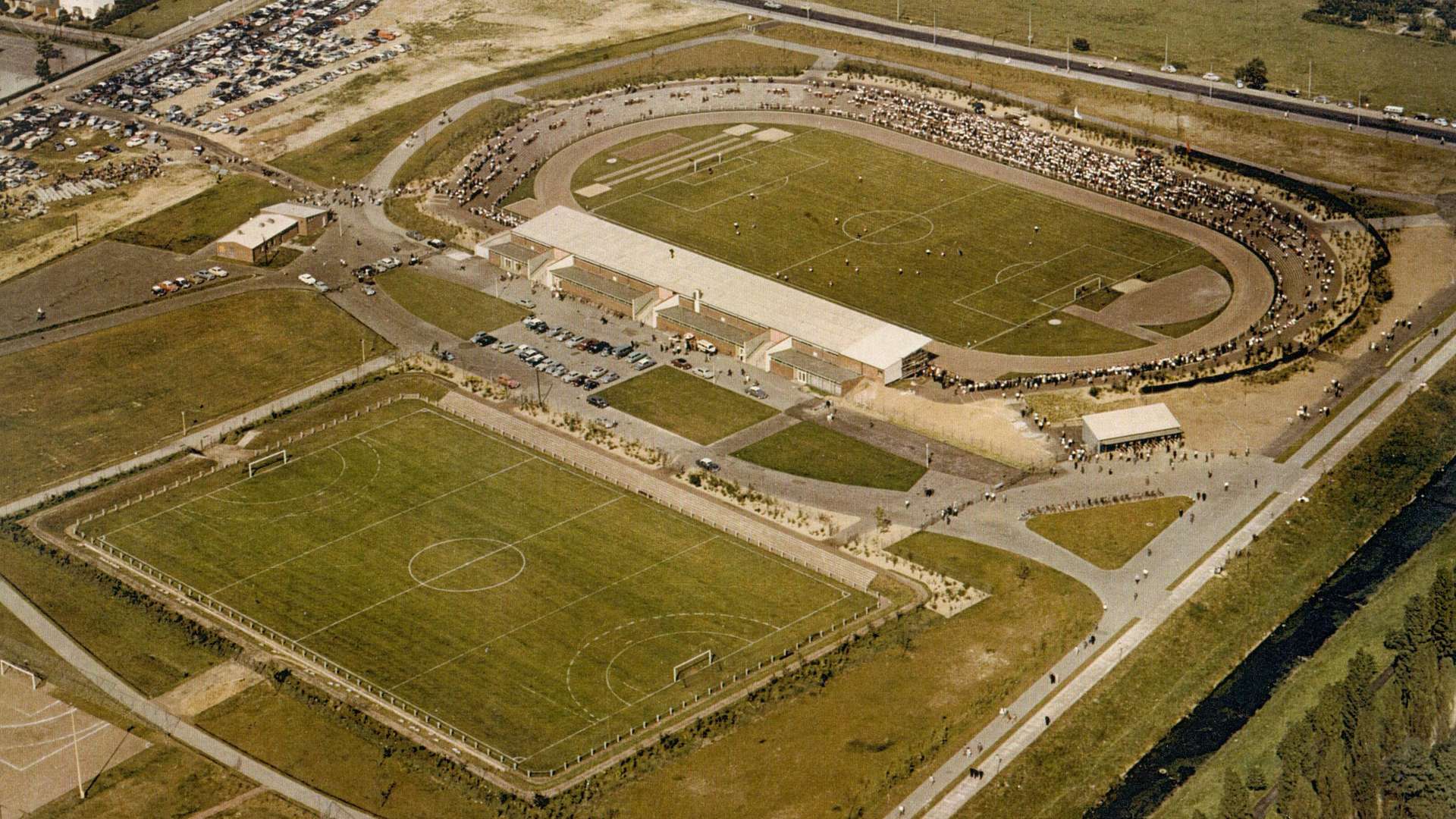

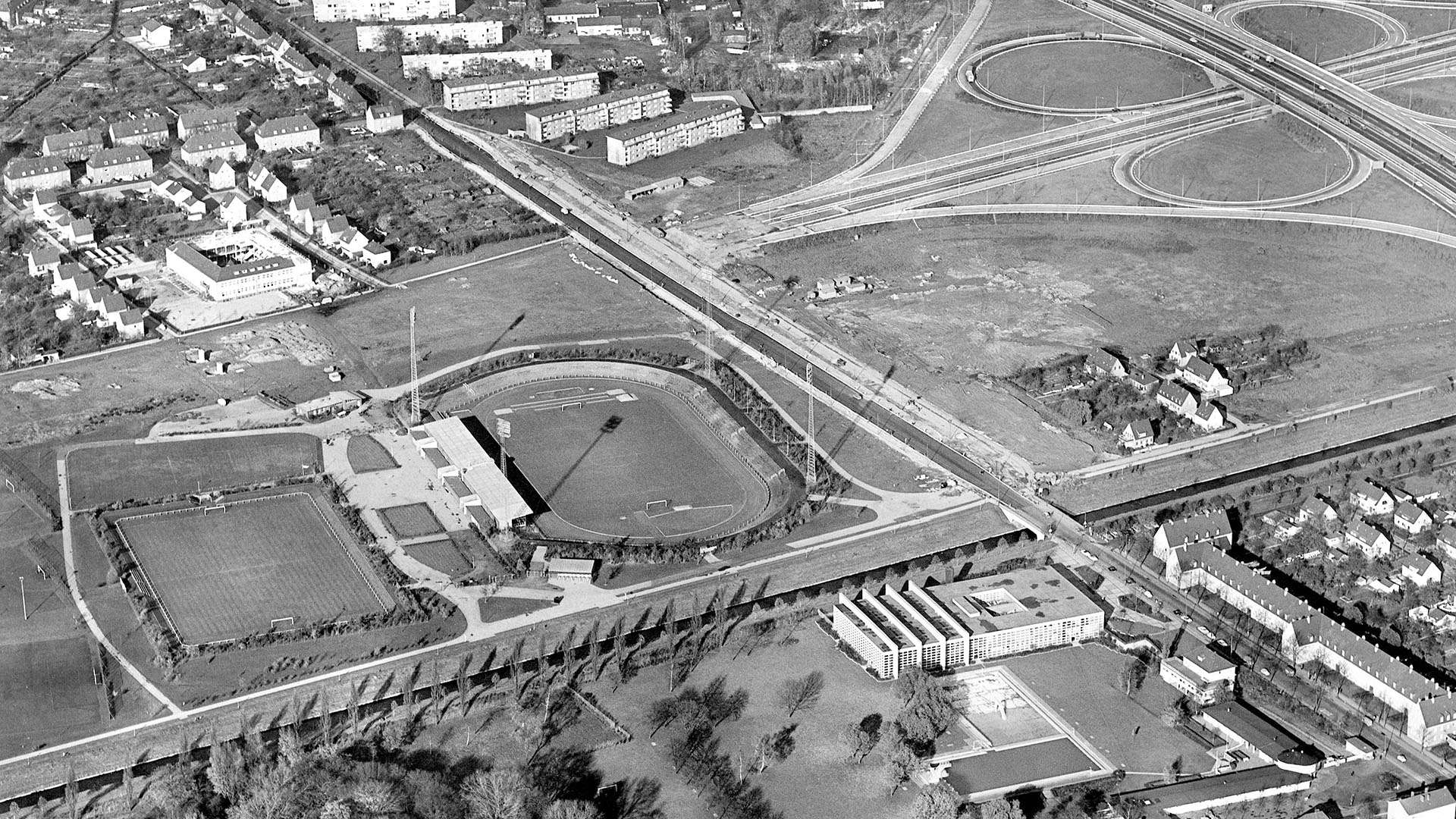
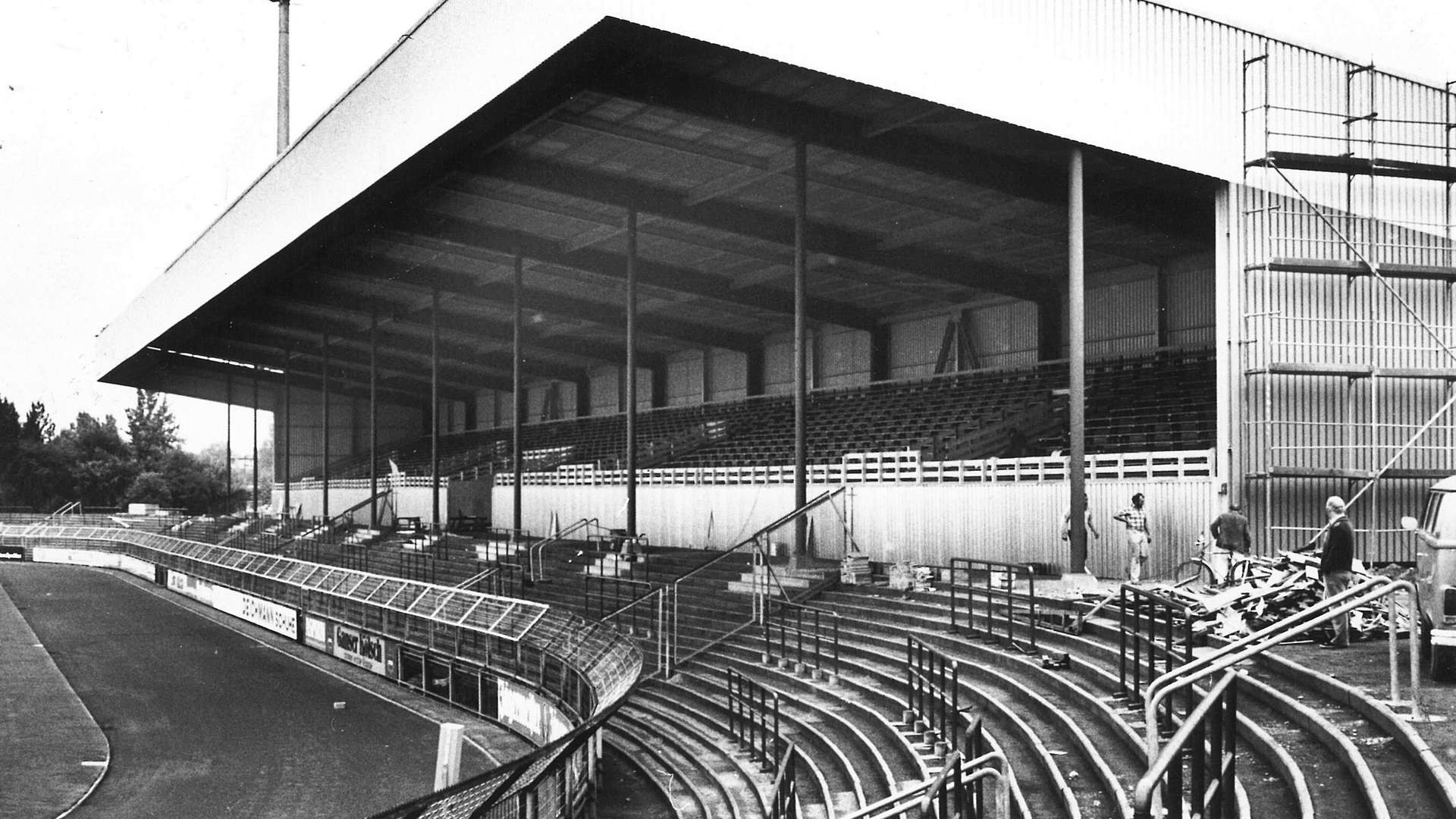
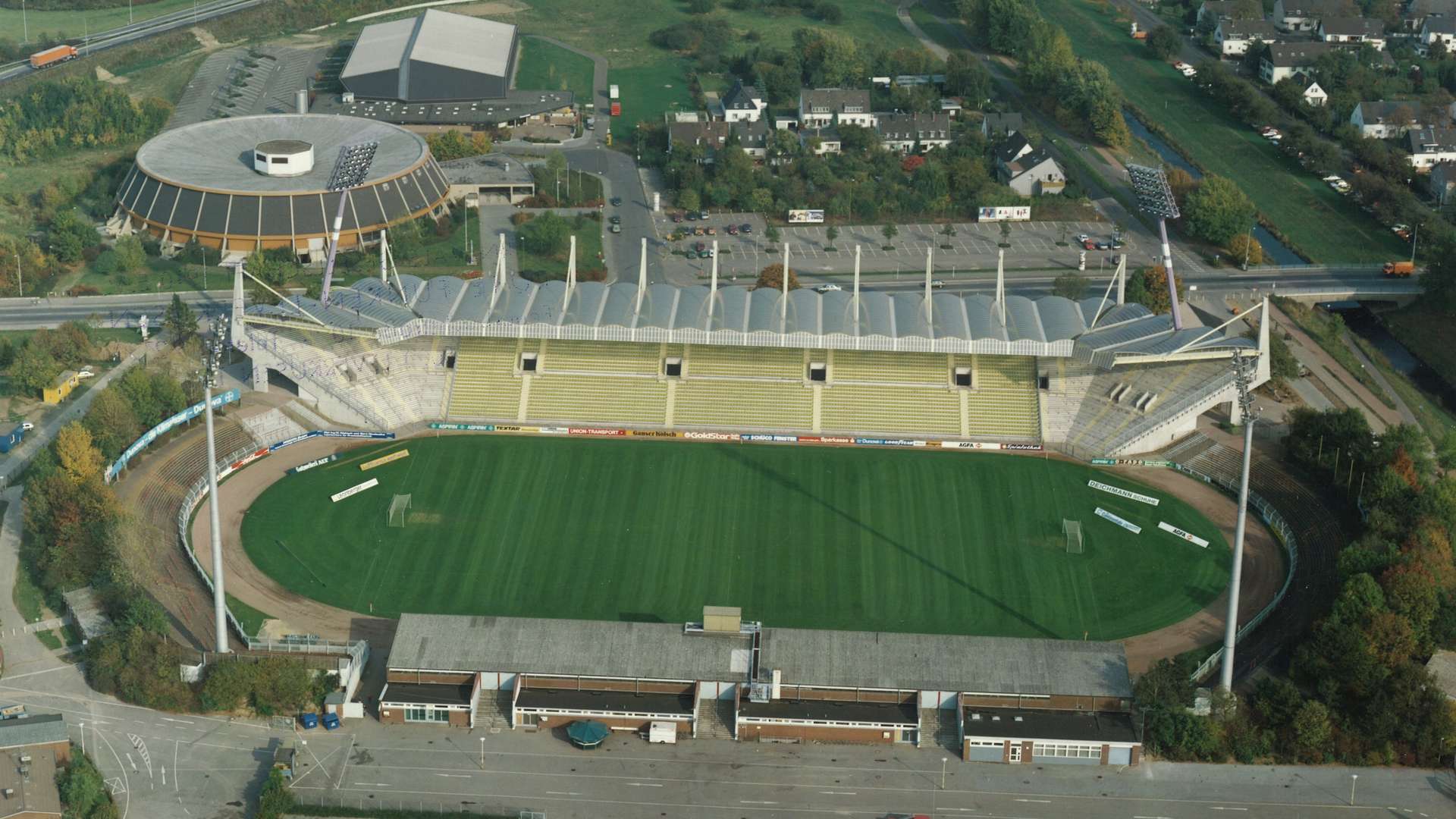
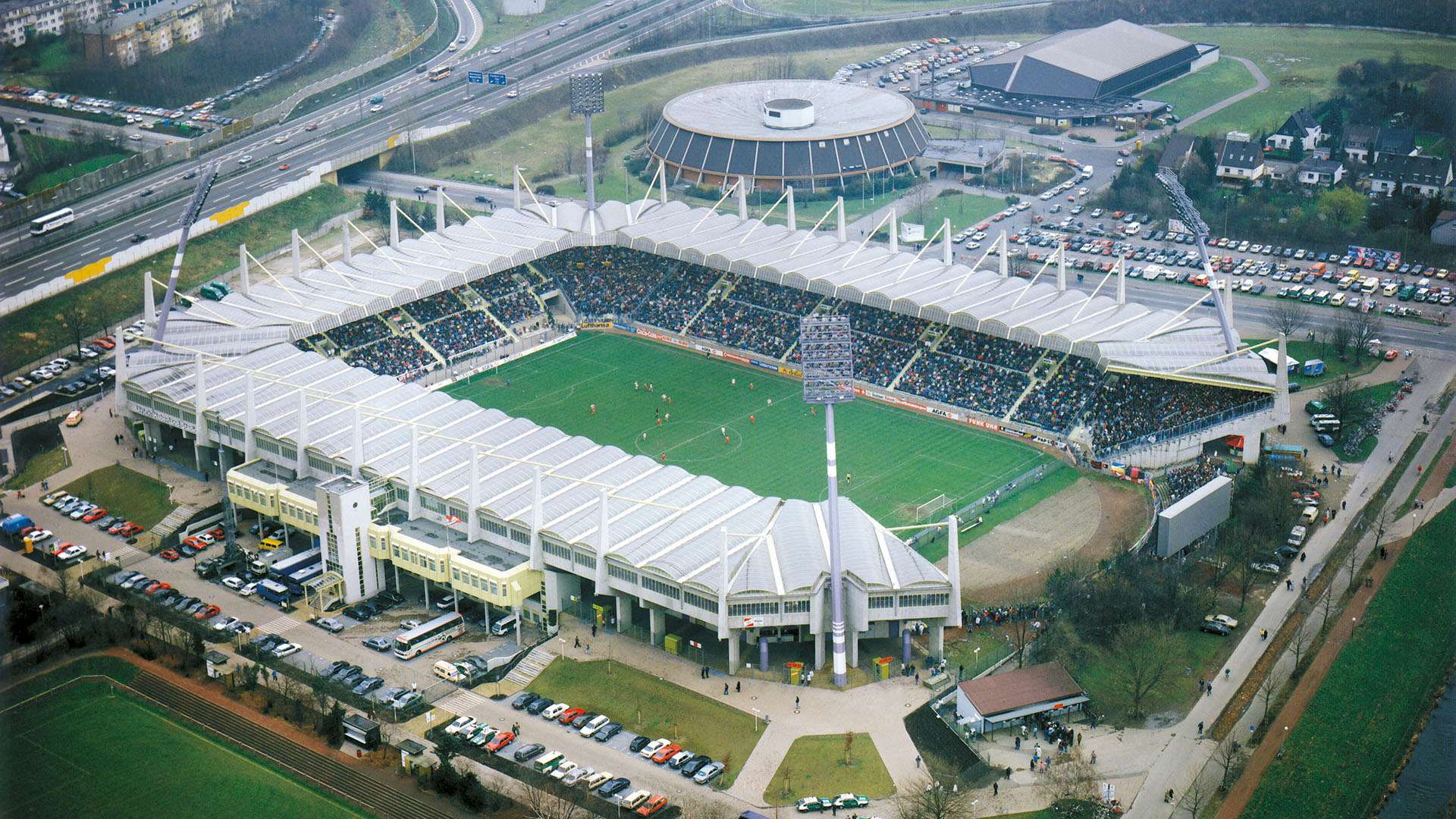
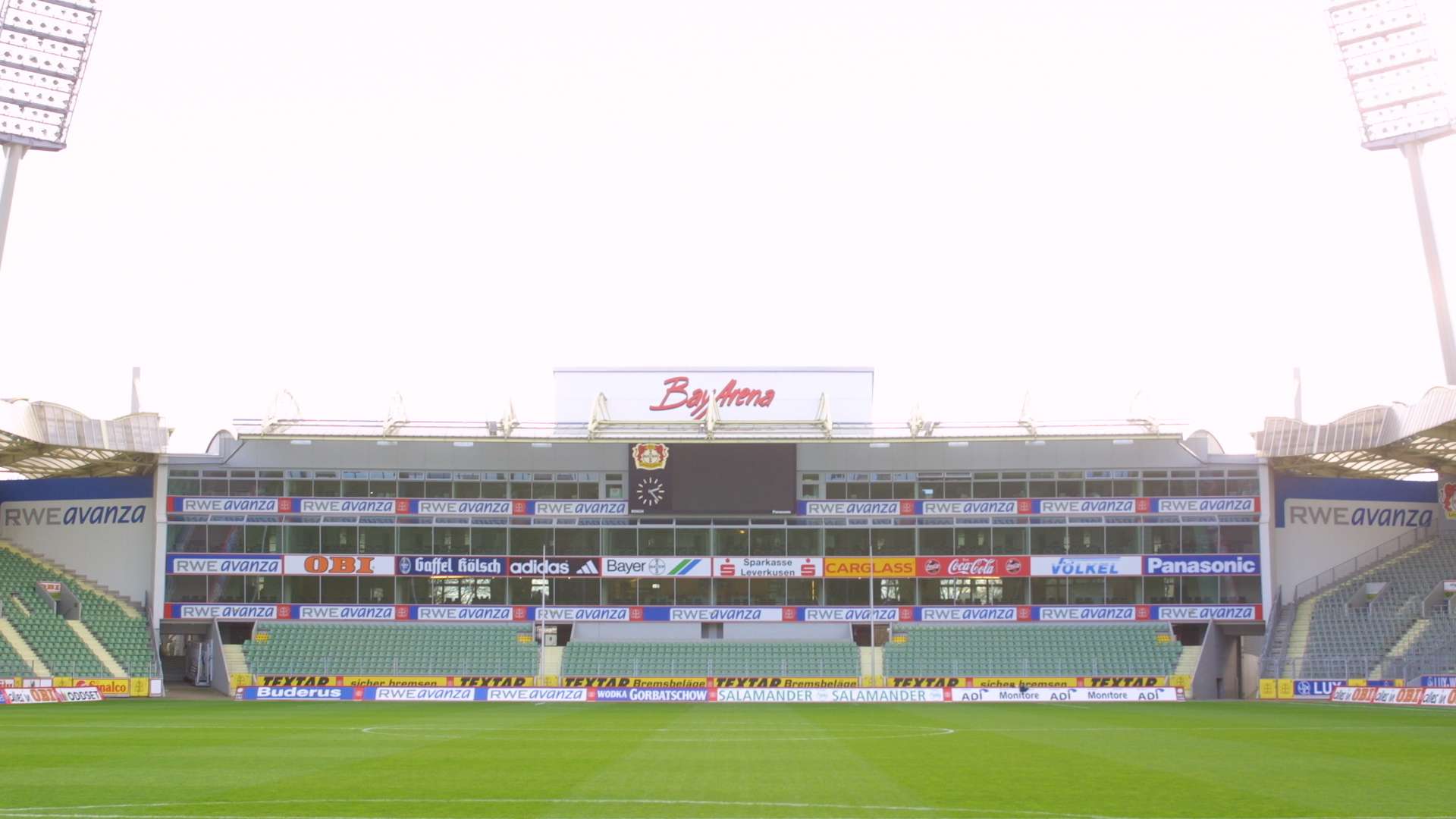
since 1998
BayArena
- 1998: The Ulrich Haberland Stadium officially becomes the BayArena
- 1999: The Lindner Hotel is completed. (Picture 19)
- Dezember 2007: Start of the rebuild of the BayArena.
- 2008/2009: Hinrunde Bundesliga home games at the BayArena without roof. (Picture 20)
- 2008/2009: Rückrunde Bundesliga home games are moved to the LTU Arena in Düsseldorf due to building work at the BayArena
- August 2009: Unveiling of the "new" modernised BayArena with unique roof structure and a capacity of 30,210 spectators (Picture 21)
